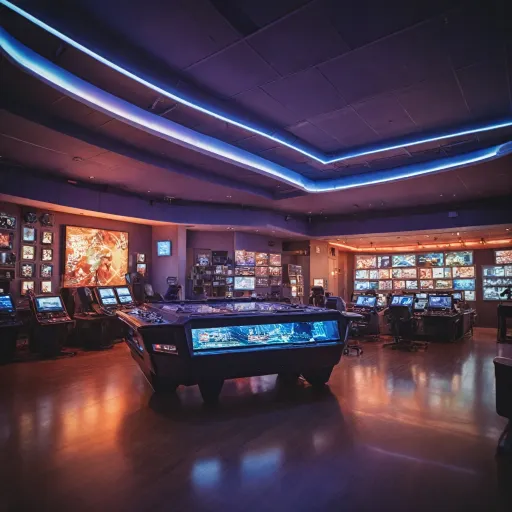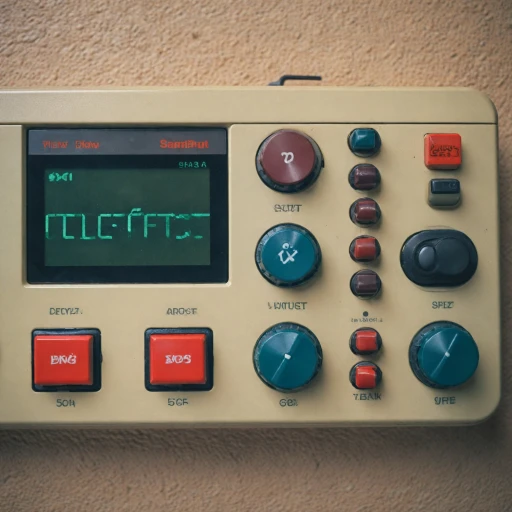
The Legacy of the Predecessor
Tracing the Footprints of a Revolutionary Era
The landscape of video gaming has been shaped by various legendary systems and one such pivotal console that set the stage before the advent of the Nintendo Switch is the Nintendo Wii. A groundbreaking entry in the realm of interactive entertainment, the Wii redefined how players engage with their games, leaving an indelible mark that paved the way for future innovations. Before the release of this gaming marvel, Nintendo had already established a formidable presence in the industry with consoles like the NES and Super Nintendo Entertainment System (SNES). The Nintendo Wii, launched in November, came as another innovation with its unique motion-sensing controls, encouraging physical interaction and making it a household name. While the market was dominated by systems focusing on graphics and hardware performance, the Wii dared to shift the focus towards creating an engaging user experience. This console not only offered a fresh set of interactive features but also opened up the gaming world to a wider audience—appealing to both hardcore gamers and casual players alike. Its gameplay aspect brought a new dimension to traditional game styles, revitalizing interest in classic franchises such as "The Legend of Zelda" and "Super Mario Bros." Furthermore, the Wii struck a chord with families through its array of sports and party games, creating a shared entertainment ecosystem that resonated worldwide. A noteworthy impact of the Wii's legacy includes inspiring designs that preceded the Switch, influencing how games and consoles are viewed today. As we look back on its legacy, it's evident how the Wii's ability to forge new industry trends laid a robust foundation for the consoles that followed, including the Switch, revolutionizing the domain of home entertainment systems. For a deeper dive into how gaming systems from that era shaped today’s landscape, explore the extensive game list of Legends Ultimate Arcade.Key Features and Innovations
Innovative Features of the Console
The gaming console that came before the Nintendo Switch introduced some groundbreaking features at the time, setting the stage for future innovations in the gaming industry. One of its most notable attributes was its ability to provide an immersive gaming experience through its high-quality graphics and sound capabilities. It was equipped with a powerful entertainment system that allowed players to enjoy a vast library of video games, including beloved classics like Legend of Zelda and Super Mario Bros, which are still cherished today.
In a significant move forward, this gaming console was designed with a user-friendly interface, making it accessible to both seasoned gamers and newcomers alike. Its innovative controller design offered an intuitive feel, enhancing the gaming experience and paving the way for advanced controllers seen in systems such as the Wii and later, the Nintendo Switch.
One fascinating aspect of this console was its ability to connect with handheld devices, like the Game Boy and Boy Advance, offering a multi-layered gaming ecosystem. This feature allowed players to take their favorite games on the go, a precursor to the hybrid capabilities of the Switch which were later celebrated as a major innovation in the gaming world.
Not just limiting itself to traditional video game titles, this console also incorporated elements like crossword puzzles and game clues, broadening the spectrum of entertainment available to users. This diverse offering is part of what made the system stand out when it was launched in Japan and globally.
For those interested in delving deeper into the legacy of some of these classic games and how they influenced subsequent console features, the exploration of the legacy of the Super Mario Bros NES cartridge offers an in-depth look at the impact and evolution of gameplay experiences.
Market Reception and Popularity
Assessing the Market's Response
When the predecessor to the Nintendo Switch was introduced, it faced a landscape filled with challenges and opportunities. The console was launched with high expectations, stepping into the competitive arena of gaming consoles that were steadily evolving. At its release, the focus was on providing players with a unique blend of portability and entertainment, aiming to captivate audiences globally.
The initial market reception for this console was a mix of excitement and skepticism. Gamers, particularly the loyal fanbase of the Nintendo franchise, keenly anticipated experiencing iconic titles like Pokemon and The Legend of Zelda on the new system. The console's ability to integrate popular NES and Super NES games was a significant draw, bolstering its appeal to both retro gaming enthusiasts and new players alike.
In markets such as Japan and North America, the console enjoyed robust sales, finding a sweet spot among players who valued its versatility. However, it faced headwinds in terms of competition, specifically from incumbents like the Wii and the emerging strategies of other gaming giants. Despite these challenges, the gaming system's launch dates, typically falling in March and June, allowed it to capitalize on key retail periods. This strategic timing played a substantial role in its market dynamics.
The interplay of nostalgia and innovative gaming experiences, alongside staple crossword clue answers like the immersive experience provided by this console's predecessors, bolstered its popularity. Moreover, the connectivity options that mirrored the success seen in other Nintendo platforms helped maintain consumer interest beyond the initial launch period.
Comparative Analysis with the Switch
Comparing a Digital Experience
To understand how the console that came before the Switch set the stage for its successor, a direct comparison is necessary. This analysis highlights the differences and similarities between the two, focusing on various facets of both consoles’ features and capabilities.- Game Library: The predecessor boasted a diverse collection of games, including some iconic titles from franchises like Pokémon and The Legend of Zelda. This extensive library positioned it as a favorite among gamers who sought an entertainment system with an extensive catalogue. While the Nintendo Switch also introduced new games, it continued the legacy with enhanced versions of fan-favorites and added titles that support diverse playstyles, from puzzle challenges like crosswords to expansive open-world adventures.
- Hardware and Design: Physically, the console that preceded the Switch was slightly bulkier, catering to traditional television setups. The transition to the Switch emphasized portability, resonating with those familiar with the Game Boy line, like the Game Boy Advance. This evolution stressed the importance of a flexible gaming experience, echoing the portability of Nintendo's handheld devices.
- Innovative Controls: In terms of interactivity, the previous console introduced novel controls that prepped the market for the integrated features of the Nintendo Switch, offering a refined, multi-mode gameplay experience—rivaling its predecessors. For instance, while the previous console laid groundwork for motion-sensing technology akin to the Wii's, the Switch perfected it with its Joy-Con controllers.
- Market Position and Appeal: Launched initially in Japan, the former console captured the market with its emphasis on home entertainment. It created the pathway for the Switch's broader global reach upon its release in March. The Switch engaged its audience not just as a home console but as a travel-friendly device, broadening its target market throughout November and succeeding in captivating both casual gamers and dedicated enthusiasts.
Challenges Faced by the Console
The Hurdles and Setbacks
The journey for the Nintendo console that preceded the Switch was not without its challenges. Its competition in an ever-evolving video game industry presented significant hurdles. Launching shortly after the success of the Wii, this gaming console faced high expectations from both the gaming community and market analysts. One of the main challenges was its reception in various international markets. Released in Japan to mixed reviews, the console found it difficult to replicate the unprecedented popularity of its cousin consoles like the Nintendo Entertainment System or the Super Nintendo. Despite its connection with beloved franchises such as Pokemon and The Legend of Zelda, which were historically strong sellers across the Nintendo platform, the uptake wasn't as enthusiastic initially as seen previously in franchises like Game Boy or Boy Advance lines. The console also struggled with defining its unique selling proposition amid fierce competition. Unlike the groundbreaking capabilities that distinguished the Nintendo Switch, this particular system faced criticism for lacking substantial innovation in comparison to other entertainment systems launched around the same period. Consumers were not entirely convinced about the added value compared to existing preferences like Super NES or newer systems that were emerging. Technical difficulties and the delay in launching innovative titles made it difficult to establish a strong foothold. This was further exacerbated by the burgeoning cross-platform gaming trend, which some players felt the console did not adequately support at its inception. Unraveling these obstacles, Nintendo learned valuable lessons by the time the Switch entered the scene. This previous experience demonstrated the necessity for versatility and consumer-centric improvements, paving the way for future successes. Despite the challenges, the console that preceded the Switch sowed seeds of learning that influenced the development of Nintendo’s subsequent gaming system offerings.The Console's Influence on Future Designs
Impact on Future Console Designs
As with many groundbreaking devices, the console that came before the Nintendo Switch left an indelible mark on future gaming systems, influencing trends and innovations. It seamlessly integrated new standards in gaming entertainment, setting the bar high for consoles that followed. This inspiration can be seen in various aspects of modern gaming consoles:
- Innovation in Portability: The success of the portable entertainment system, akin to the Nintendo Game Boy, spurred further advancements leading to the creation of the more advanced Nintendo Switch. This focus on mobility has been embraced across the industry, leading to more flexible gaming experiences.
- Integration of Popular Franchises: The console introduced beloved games like Pokémon, which have continued to thrive on subsequent systems, including the Nintendo Switch. Additionally, franchises such as The Legend of Zelda and Super Mario have seen reinvigorated interest across platforms.
- User Interface & Interaction: Learning from the past, the devices that came next, including the Nintendo Switch and Wii, evolved by adopting more intuitive user interfaces and interaction styles, enhancing the gamer’s experience significantly.
- Diverse Game Library: Similar to how the Super Nintendo Entertainment System offered a wide range of games, the forward-looking systems carried this tradition by leveraging extensive libraries filled with various genres—from crossword and puzzle games to expansive adventure titles.
- Cultural Impact and Nostalgia: The pre-Switch console, similar in its capabilities to the Super NES, played a pivotal role in establishing many modern gaming traditions, making it a nostalgic powerhouse that indirectly influenced game design philosophies moving forward.
The legacy of this console is evident in the strides taken by those that followed, such as the Nintendo Entertainment System and others like it. Its influence continues to guide the evolution of video game systems, maintaining a focus on both innovation and the tried-and-true elements that gamers love.












